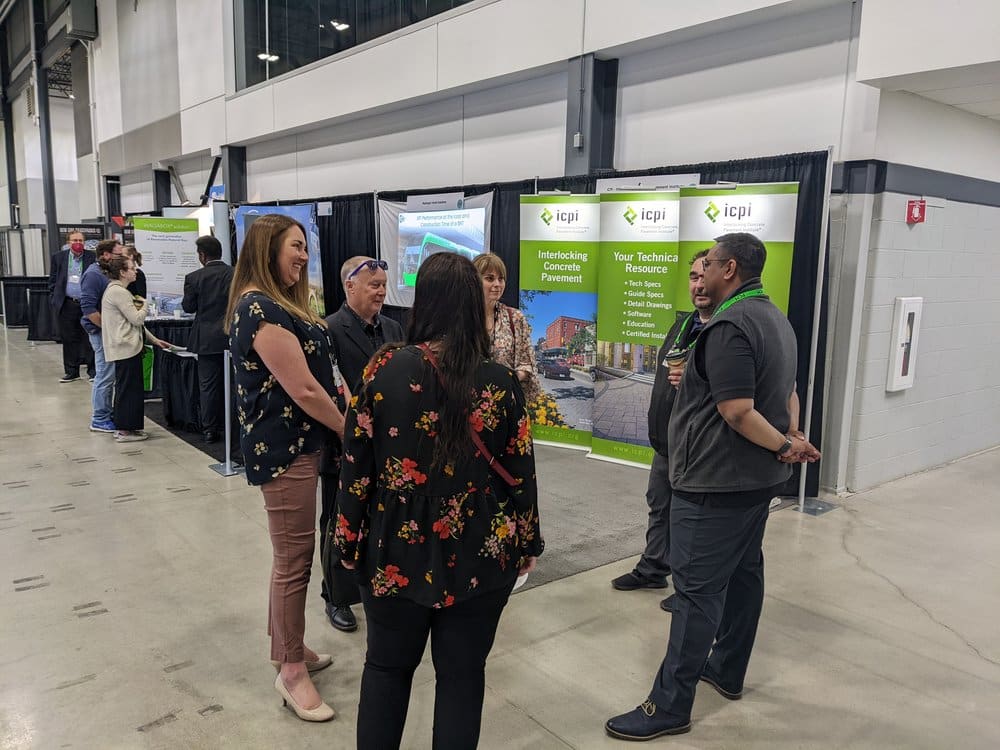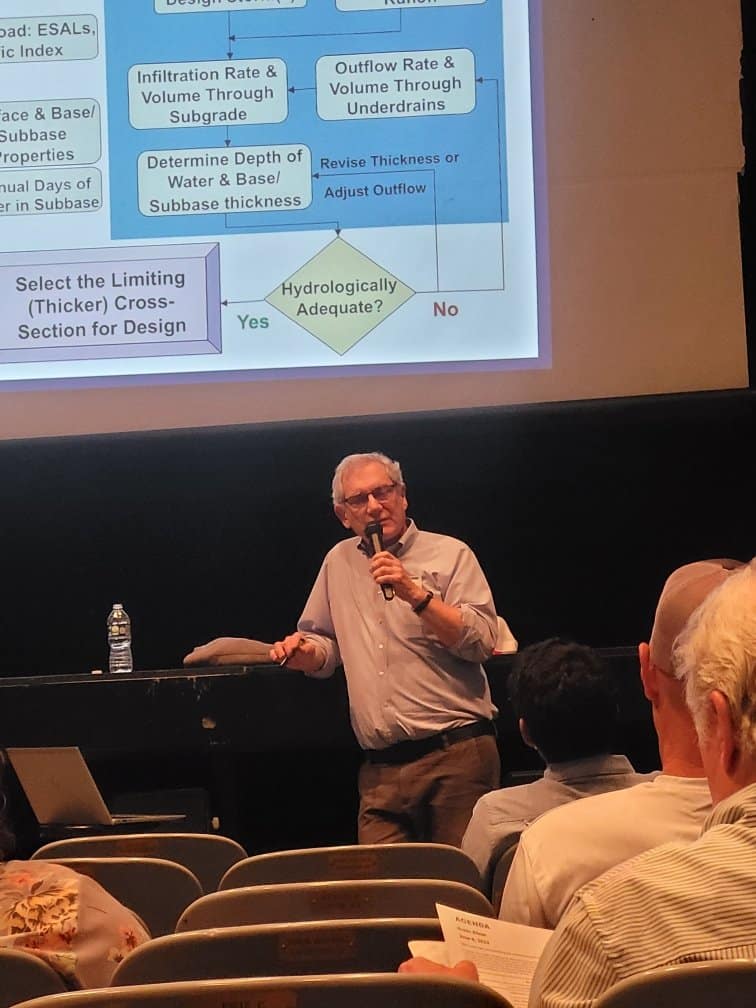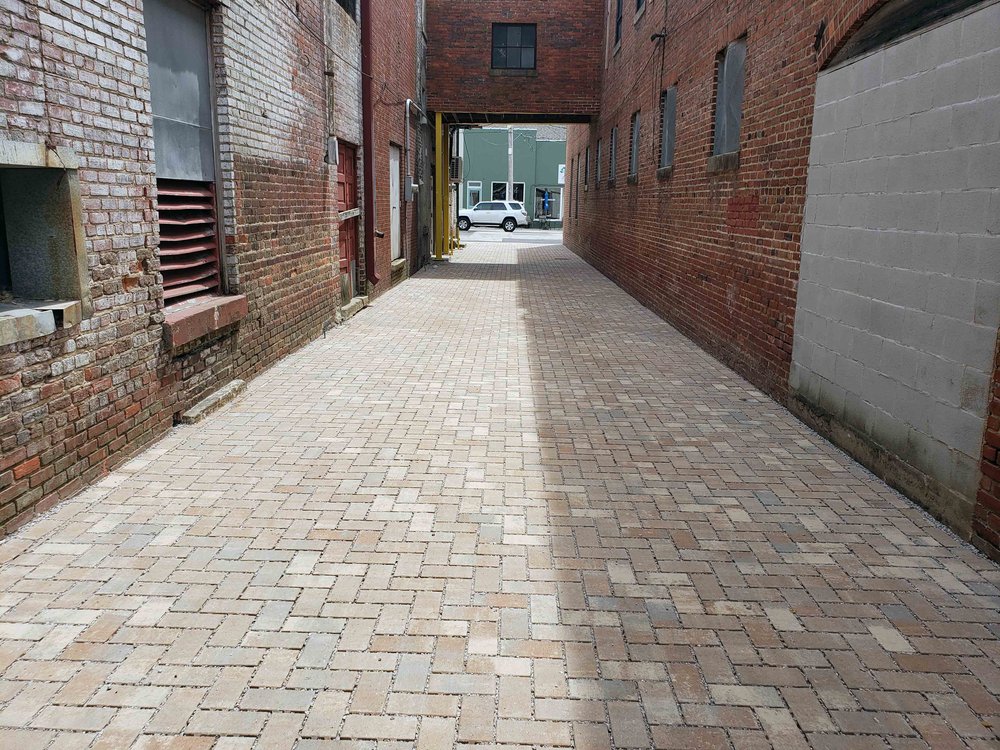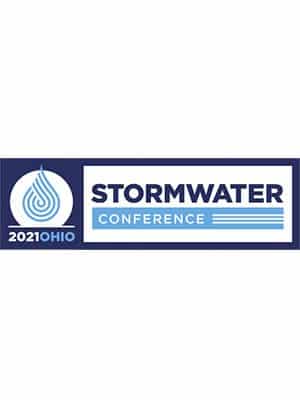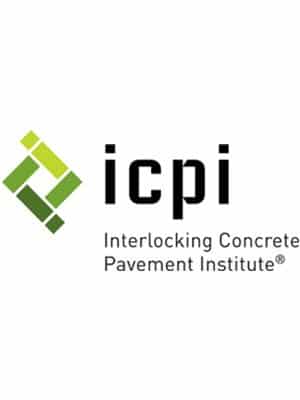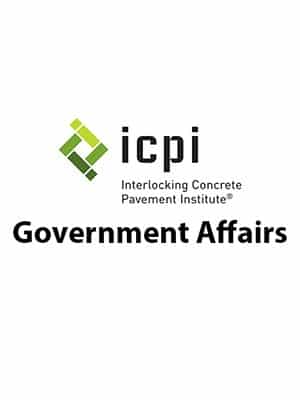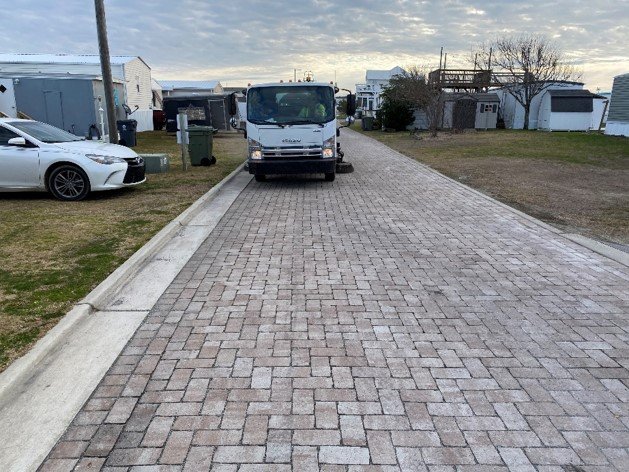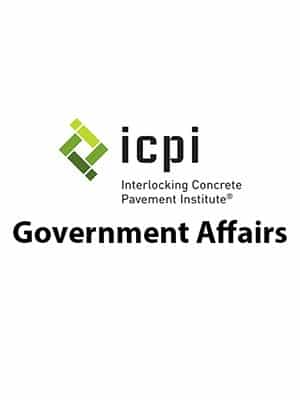ICPI Government Relations Update
Randall Pence, Capitol Hill Advocates LLC
Capitol Hill action on WRDA 2022, the Water Resources Development Act Reauthorization
The Senate Environment and Public Works Committee passed its version of WRDA 2022 out of committee in early May. The Senate bill is S4136.
In early June, the House passed its version of WRDA 2022. The House bill is HR7776.
We now expect House and Senate infrastructure leaders to work out an agreement between the two bills. In the past, these discussions have gone well and have led to bills being passed by both Houses and sent to the President to be signed into law.
WRDA reauthorizations have been bills strongly supported by ICPI. Fortunately, WRDA reauthorizations have been easier for Congress to pass than other infrastructure bills because of the lack of funding linkage to the federal gasoline tax as a means for funding, and because Members of Congress have been willing to usually avoid contentious partisan issues that stop other bills. WRDA has melded into a stable and reliable two-year reauthorization cycle that ICPI applauds.
This version of WRDA includes more than sixty stormwater projects. One of the messages ICPI has adopted to educate policymakers is the logical connection between pavers and stormwater mitigation.
The following is an edited selection of press statements offered from the House Transportation and Infrastructure Committee describing its version of WRDA 2022. This material is noteworthy in part for its clear highlighting of bipartisanship on the legislation:
Chairs DeFazio, Napolitano Applaud House Passage of Bipartisan Water Resources Development Act of 2022
With the passage of WRDA 2022, Congress continues the tradition of enacting bipartisan WRDAs on a biennial basis to invest in America’s water resources infrastructure
Washington, D.C. – Today, Chair of the House Committee on Transportation and Infrastructure Peter DeFazio (D-OR) and Chair of the Subcommittee on Water Resources and Environment Grace F. Napolitano (D-CA) applaud House passage of the bipartisan Water Resources Development Act (WRDA) of 2022.
WRDA 2022 will improve the nation’s water infrastructure by authorizing water resources development projects in collaboration with the U.S. Army Corps of Engineers (Corps). This legislation will strengthen America’s economy through investments in ports, harbors, and inland waterways; make communities more resilient in the face of extreme weather and climate change; and protect and restore our ecosystems.
“The Water Resources Development Act of 2022—the largest and most ambitious WRDA bill to date—demonstrates that when Congress works together, it can pass legislation on a bipartisan basis that benefits communities across the country. WRDA 2022 helps provide much needed investment in ports, harbors, and inland waterways—easing supply chain problems—as well as flood mitigation infrastructure, and ecosystem restoration in both urban and rural communities alike,” said Chair DeFazio. “The bill also directs the Corps to carry out these projects in an economically and environmentally responsible manner, with an added emphasis on coordinating with state, local, and Tribal partners to execute projects equitably. I want to thank Transportation and Infrastructure Committee Ranking Member Sam Graves, Subcommittee on Water Resources and Environment Chair Napolitano and Ranking Member Rouzer for their important work on this legislation. I urge the Senate to act quickly so we can send a final bill to the President’s desk to be signed into law.”
“WRDA is our legislative commitment to investing in and protecting our communities from flooding events, restoring our environment and ecosystems, and keeping our nation’s competitiveness by supporting our ports and harbors. Through biennial enactment, our Committee has addressed local, regional, and national needs through authorization of new U.S Army Corps of Engineers projects, studies, and policies that benefit every corner of the nation,” said Chair Napolitano. “We held four hearings in preparation for this bill, including a Member Day hearing, and had a formal process to receive legislative, policy, and project ideas from Members which resulted in over 1,500 ideas submitted, most of which were incorporated in the final bill. I am very pleased to join Chairman DeFazio, Ranking Member Graves, and Subcommittee Ranking Member Rouzer in bringing WRDA to the floor, and I thank all Members for engaging with the Committee on this bill and advocating for the needs of your districts.”
——-
Workforce development interest on the Hill with focus on infrastructure
The House Transportation and Infrastructure Committee is engaging the issue of workforce development in the transportation construction economy. The Committee recently held a hearing on the issue, which is usually a signal of substantial interest among the Committee leaders. There seems a recognition that there need to be alternatives to 4-year college career paths, and those paths could well include good careers in transportation construction and related trades. We note this in case future action on the issue might include discussions relevant to market segments like the paver industry. Of course, workforce development continues to be an issue of great concern among ICPI members. While we generally see a greater degree of cooperation and bipartisanship on the infrastructure-related committees, an exception might emerge here relating to the open shop versus union shop dichotomy.
——-
H-2B worker visa program in the Consolidated Appropriations Act for FY22
After months of talks and multiple Continuing Resolutions, both Houses reached agreement for a final comprehensive FY22 funding bill in early March. The President signed the huge bill into law on March 15. This action supplants the prior-passed Continuing Resolution (CR) that had been funding the federal government on a stopgap basis.
Among thousands of issues, this Act contains several provisions relevant to the H-2B worker visa program.
Of course the H-2B worker visa program remains a priority for ICPI members. See below selections of the H-2B Consolidated Appropriations language, not a complete rendering but important elements:
- Consular Operations.-The agreement endorses House report language under the heading Timely Processing of Passports and Visas. Not later than 90 days after enactment of the Act, the Secretary of State shall submit a report to the Committees on Appropriations regarding lessons learned from the pandemic, including the adoption of remote services, the feasibility of increased interview waivers and remote visa interviews, and any other process improvements that would enhance consular services domestically and overseas.
- Exchange Visitor Program Clarification.-For purposes of subsection (e)(7), the term “modify” means any executive action that changes the number, origin, or eligibility of program participants during any 60 day period, or that otherwise changes the manner in which the program is implemented, including the suspension of visas
- Foreign labor Certification — The agreement recognizes the importance of the H-28 program and urges the Department to take all necessary and appropriate steps to ensure prompt processing of H-28 visa applications.
- H-2B Visas.- The Department shall, in consultation with the Department of Labor, examine the impacts of the current H-2B visa semiannual distribution on employers, employees, and agency operations and provide the Committees a briefing on the study not later than 180 days after the date of enactment of this Act.
——-
More H-2B worker visa program, and several regulatory actions recently
There has been much regulatory activity on H-2B in addition to what was included in the Consolidated Appropriations Act.
We begin with the following announcement released by USCIS on March 31:
DHS and DOL to Supplement the H-2B Cap with Additional Visas for Second Half of Fiscal Year 2022
Departments to add additional visas and significant worker protections
WASHINGTON —The Department of Homeland Security (DHS) and the Department of Labor (DOL) today announced the forthcoming publication of a joint temporary final rule to make available an additional 35,000 H-2B temporary nonagricultural worker visas for the second half of fiscal year (FY) 2022. These visas will be set aside for U.S. employers seeking to employ additional workers on or after April 1, 2022, through Sept. 30, 2022.
“Informed by current demand in the labor market, today we are announcing the availability of an additional 35,000 H-2B visas that will help to support American businesses and expand legal pathways for workers seeking to come to the United States,” said Secretary Alejandro N. Mayorkas. “Recognizing the importance of strong worker protections, we will apply greater scrutiny to those employers who have a record of violating obligations to their workers and the H-2B program.”
The supplemental H-2B visa allocation consists of 23,500 visas available to returning workers, who received an H-2B visa or were otherwise granted H-2B status, during one of the last three fiscal years. The remaining 11,500 visas, which are exempt from the returning worker requirement, are reserved for nationals of Haiti, Honduras, Guatemala, and El Salvador.
The H-2B program permits employers to temporarily hire noncitizens to perform nonagricultural labor or services in the United States. The employment must be for a limited period of time, such as a one-time occurrence, seasonal, or intermittent need. Employers seeking to hire H-2B workers must take a series of steps to test the U.S. labor market. They must provide certification from the Department of Labor that proves there are not enough U.S. workers who are able, willing, qualified, and available to do the temporary work for which they seek a prospective foreign worker, and that employing the H-2B workers will not adversely affect the wages and working conditions of similarly employed U.S. workers.
In January 2022, the Departments announced the availability of 20,000 additional H-2B temporary nonagricultural worker visas for the first half of fiscal year (FY) 2022. Additional details about how the supplemental allocation will be implemented, including the worker protections, will be provided in the forthcoming temporary final rule.
Thereafter, ICPI and other pro-H-2B associations sent the following joint letter:
April 11, 2022
The Honorable Alejandro Mayorkas The Honorable Marty Walsh
Secretary of Homeland Security Secretary of Labor
Washington, DC 20528 Washington, DC 20001
Dear Secretaries Mayorkas and Walsh:
The H-2B Workforce Coalition is comprised of small and seasonal businesses across the country owned and operated by thousands of employers and their representatives from industries such as lodging, landscaping, seafood, restaurants, tourism, equine, forestry, mobile outdoor amusement, golf courses, and others. Our members are seasonal businesses that rely on the H-2B visa program to supplement their U.S. workforce during seasonal surge and peak business needs.
We thank you for the announcement on March 31, 2022, exercising the authority Congress granted to you in the Consolidated Appropriations Act of 2022, Pub. L. No. 117-103, Division O, Title II, Sec. 204P. This announcement is welcome news to the many seasonal business across the country who are facing dire labor shortages and we ask that you expeditiously publish a temporary final rule implementing your decision to release the additional 35,000 visas.. The recent filings with DOL for the second half of the fiscal year clearly show that there will be significant workforce disruptions if additional cap relief does not materialize soon. On January 4, 2022, DOL announced that it had received 7,875 H-2B applications requesting 136,555 worker positions for the second half of the 2022 fiscal year. This is more than four times the number of visas permitted under the statutory cap for this period. Congress has continued to provide you with the authority to release additional visas and we again thank you for announcing the decision to do so, however we are pleading with you to publish a temporary rule implementing that decision as soon as possible.
There is a dire shortage of seasonal labor in the U.S. and many employers turn to the H-2B program to meet their workforce needs to not only sustain their businesses, but also to support their American workers. Every H-2B worker supports 4.64 U.S. jobs. Furthermore, a 2020 General Accountability Office report concluded that “counties with H-2B employers generally had lower unemployment rates and higher average weekly wages than counties that do not have any H-2B employers.”
The H-2B program places many requirements on employers to recruit U.S. workers, and our members try to find as many U.S. workers as they can. In these unprecedented times, there are simply not enough workers to meet the seasonal workforce needs of U.S. employers. The most current employment data bare out the workforce struggles of seasonal businesses nationwide, as the Bureau of Labor Statistics reported that while there were 11.3 million job openings in the U.S, at the end of January, the number of unemployed people in the country rests at 6.3 million.
We want to thank you for recognizing the seasonal labor crisis and unprecedented demand that led to the release3 of 20,000 H-2B supplemental visas for the first half of FY22. This marked the first time the Administration has released supplemental H_2B visas for the first half cap, which has significantly less demand than the April 1st date of need that now needs your action.
The timing in which the 35,000 H-2B visas are to be released is critical to ensure that seasonal businesses can meet their workforce needs when their seasonal demands are peaking. Last year, we were grateful that 22,0004 additional H-2B visas were released to supplement the second half cap allocation for FY21. Unfortunately, the rule wasn’t published until May 25, 2021; due to the time it took to process the petitions, allocate the additional visas, and then bring the workers into the country, many H-2B workers were not on their employer’s payroll until after the fourth of July. For companies that needed these workers on April 1 this is more than three months past the employer’s date of need. Seasonal businesses that require H-2B visas need them to be available in the spring, not the middle of the summer when nearly half of the peak season has passed. We respectfully request that expeditiously issue the temporary rule to coincide as closely as possible with the April 1, 2022 date of need.
Additionally, seasonal employers continue to strongly support the administration’s efforts to increase access to H-2B visas for foreign nationals from the Northern Triangle countries and Haiti. We will continue to work with these foreign governments to help diminish the irregular migration from these countries by helping to streamline the application process for foreign workers from these countries. It remains incumbent upon the administration to revert unused supplemental visas from Northern Triangle and Haiti to returning workers from other nations to fulfill the demand for seasonal workers, as nationals from the Northern Triangle and Haiti cannot satisfy these labor demands alone and we are unsure if there will be 11,500 workers from these countries available to fill these positions.
Thank you for your consideration of these important matters and we look forward to continuing the important dialogue and assisting in any way possible. Later, on May 15, USCIS issued the following announcement: DHS and DOL Announce Availability of Additional H-2B Visas for Second Half of Fiscal Year
WASHINGTON—The Department of Homeland Security (DHS) and the Department of Labor (DOL) announced today the availability of an additional 35,000 H-2B temporary nonagricultural worker visas during the second half of fiscal year (FY) 2022. These visas are for U.S. employers seeking to employ additional workers on or after April 1, 2022, through Sept. 30, 2022.
“These additional H-2B visas will help employers meet the demand for seasonal workers at this most critical time, when there is a serious labor shortage,” said Secretary Alejandro N. Mayorkas. “The visas are accompanied by significant worker protections and provide a safe and lawful pathway for individuals to come to the United States and earn wages in jobs that are not filled by American workers.”
The supplemental H-2B visa allocation consists of 23,500 visas available to returning workers who received an H-2B visa or were otherwise granted H-2B status during one of the last three fiscal years. The remaining 11,500 visas are reserved for nationals of El Salvador, Guatemala, Honduras, and Haiti, regardless of whether they are returning workers. The semiannual cap of 33,000 visas for the second half of FY 2022 was reached on February 25, 2022.
The H-2B program permits employers to temporarily hire noncitizens to perform nonagricultural labor or services in the United States. The employment must be for a limited period of time, such as a one-time occurrence, or seasonal or intermittent need. Employers seeking to hire H-2B workers must take a series of steps to test the U.S. labor market. They must provide certification from DOL that proves there are not enough U.S. workers who are able, willing, qualified, and available to do the temporary work for which they seek a prospective foreign worker, and that employing the H-2B workers will not adversely affect the wages and working conditions of similarly employed U.S. workers.
DHS will subject employers that have committed certain labor law violations in the H-2B program to additional scrutiny in the supplemental cap petition process. This additional scrutiny is aimed at ensuring compliance with H-2B program requirements and obligations.
The joint temporary final rule can be found on the Federal Register website. Employers can begin petitioning on Wednesday, May 18.
And thereafter, USCIS issued the following regarding the H-2B visa cap being reached:
Cap Reached for Additional Returning Worker H-2B Visas for Second Half of FY 2022
Under the recently announced H-2B supplemental cap temporary final rule increasing the cap by up to 35,000 additional H-2B nonimmigrant visas through the end of fiscal year (FY) 2022, USCIS has received enough petitions to reach the cap for the additional 23,500 visas made available for returning workers only. We continue to accept petitions for H-2B nonimmigrant workers for the additional 11,500 visas allotted for nationals of El Salvador, Guatemala, Honduras and Haiti, regardless of whether they are returning workers.
Because no properly filed petitions were received on the date of the temporary final rule’s publication, we began accepting H-2B petitions on May 19. In the first five business days of filing, we received petitions for more beneficiaries than the additional 23,500 visas made available for H-2B returning workers. In accordance with DHS regulations, we used a computer-generated process to conduct a random selection of petitions to meet, but not exceed, the 23,500 returning worker allotment for FY 2022. The random selection, completed on May 27, included all H-2B cap-subject petitions filed under the H-2B returning worker allotment that were received between May 19 and May 25. We will reject and return any cap-subject petitions for H-2B returning workers (not including petitions for nationals of El Salvador, Guatemala, Honduras and Haiti) received after May 25, together with any accompanying filing fees. Petitions accepted for processing will have a receipt date of May 31, 2022. Premium processing service for these petitions begins on that receipt date.
Petitioners whose workers were not selected for the 23,500 returning worker allotment are encouraged to refile for workers from El Salvador, Guatemala, Honduras and Haiti while visas for that allotment remain available. The final date for filing petitions for nationals of El Salvador, Guatemala, Honduras and Haiti who are exempt from the returning worker requirement is Sept. 15, 2022, or when the cap is reached, whichever occurs first.
We will continue to accept H-2B petitions for workers filing under the El Salvador, Guatemala, Honduras, and Haiti allotment, as well as those that are exempt from the congressionally mandated cap. This includes petitions for:
Current H-2B workers in the United States petitioning to extend their stay and, if applicable, change the terms of their employment or change their employers;
Fish roe processors, fish roe technicians, and/or supervisors of fish roe processing; and Workers performing labor or services in the Commonwealth of Northern Mariana Islands and/or Guam from Nov. 28, 2009, until Dec. 31, 2029.
And thereafter, the following announcement:
On May 18, the Department of Homeland Security and the Department of Labor published a joint temporary final rule (87 FR 30334) in the Federal Register to increase the numerical limits during the second half of FY2022 for H‑2B nonimmigrant visas and continue to provide portability flexibility for H‑2B workers already in the U.S. This temporary rule allows an H‑2B worker who is already in the U. S. to begin work immediately with a new employer after an H‑2B petition (supported by a valid temporary labor certification (TLC)) is received by USCIS and before it is approved.
A temporary final rule (87 FR 4722) published in January currently provides portability and portability will continue for petitions received by USCIS through Jan. 24, 2023. Updated Form I‑9 guidance for H‑2B workers seeking to change employers is located in the Handbook for Employers – Section 6.7.
This concludes the H-2B worker visa segment.
——-
More on the Consolidated Appropriations Act, non-H-2B
FY22 Transportation-HUD (THUD) funding is included as Division L in the Act.
The Act, as lengthy as it is, does not contain all the policy-related thinking of the Subcommittees that developed each division. Perhaps the best resources on the current or latest thinking on specific issues are the FY22 committee reports developed in the summer of 2021.
Looking back at the House THUD Appropriations Subcommittee report to accompany its version of FY22 THUD (House Report 117-99, dated June 16, 2021), we note the paragraph directly addressing permeable pavements:
Permeable pavements.—The Committee continues to encourage the Secretary to accelerate research, demonstration, and deployment of permeable pavements to achieve flood mitigation, pollutant reduction, stormwater runoff reduction, environmental conservation, and resilience for new road construction and retrofit of existing roads. The Committee encourages the Secretary to conduct structural evaluations of flood-damaged pavements, with emphasis on local roads and highways subject to flooding and extended periods of inundation, to understand the mechanisms of flood damage and how permeable pavements might be used to prevent or reduce damage from future flooding. Furthermore, the Secretary is encouraged to work with the Federal Emergency Management Agency (FEMA) and the Environmental Protection Agency (EPA), as both agencies are also doing work in the area of permeable pavements and a cross-agency collaboration may yield more innovation. As such, the Committee directs the Department to submit a report within 240 days of enactment of this Act to the House and Senate Committees on Appropriations detailing current efforts, utilization, and research within FHWA and efforts made with FEMA and EPA.
All FY22 appropriations, including THUD, went through many discussions, negotiations and alterations before arriving finally at the Consolidated Appropriations Act. But the above referenced House THUD Appropriations Committee report was their final report on THUD appropriations before the Consolidated Appropriations Act was generated. So we believe it represents the latest thinking of the House THUD Appropriations Subcommittee with respect to permeable pavements.
On a separate issue in the Act, we note a provision that is listed explicitly in Division L regarding funding for the Clean Water State Revolving Fund, a matter of importance for ICPI members and a fund that ICPI supports:
State Revolving Fund (CWSRF).—The agreement provides $1,638,826,000 for the Clean Water SRF and directs the Agency to brief the Committees on addressing the impacts of nonpoint source pollution and stormwater runoff through the use of nature-based and other low impact development techniques.
——-
OSHA progress in developing a standard on heat stress in the workplace
OSHA continues work on its previously announced plan to produce a standard on heat stress in the workplace.
A potential OSHA heat stress standard calls to mind possible issues such as new considerations for water, rest, shade, training, garments, PPE issues and compliance, work tempo on heat index days and the impact of individual susceptibility to heat. This is not a complete list of possible issues that could be addressed in such a standard, but a good sample.
ICPI participated in a recent SBA remote meeting in which the regulation process on heat stress was discussed at length. NACOSH has convened a work group to review comments received thus far. An extensive materials review was also underway. NACOSH will recommend revisions to existing guidance documents related to heat stress on the jobsite; thereafter work would begin in earnest on an actual heat stress standard.
To some extent, NACOSH and its work group are still standing up their elements on the project, but they say they intend to move forward steadily. We do not know when employers might begin to see action from this particular effort that would require changes on their worksites. OSHA will seek to revise existing guidances and make them available to employers; this by itself could take some time. Heat stress will present a broad and complex set of issues with concerns raised by a large host of stakeholders in the manufacturing and construction industries. It seems clear from the discussions and the actions undertaken by OSHA that this will be an important regulatory action for ICPI members. The nearer-term releases of revised guidances will be of keen interest, in part because guidances often signal the direction that OSHA staff would like to take with respect to a subsequent standard.
Members who wish to follow action on the heat stress standard can access this web address:
——-
DOL wants to update the Prevailing Wage Methodology for Davis-Bacon
ICPI participated in a remote meeting hosted by the SBA Office of Advocacy on April 25. The USDOL effort that was discussed seeks to revise the Davis-Bacon Prevailing Wage Methodology.
A concern among employer stakeholders active on the issue is that while USDOL prefers to rely upon actual surveys identifying prevailing wages in a given area, the agency proposes to have the flexibility to use other means to arrive at something approximating a prevailing wage if the preferred means don’t clearly identify a prevailing wage. This could mean using smaller than desired samples that might not accurately indicate prevailing wages in the areas in question.
Other concerns relate to an apparent preference for metropolitan wage information versus rural area information; and there may be a possible alternative method of using state and local existing wage information.
Further, there is a recurrently stated concern that the wage survey methodology is tilted toward the use of union shop data versus open shop, which may work to the detriment of open shops and and small contractor firms.
The above mentioned remote meeting served as a listening session. It was well attended by large manufacturing and construction groups with whom ICPI routinely shares interests.
——-
Waters of the U.S. (WOTUS)
WOTUS remains an important and evolving environmental issue. In recent action, many business groups signed and sent a letter to the Administration seeking to stop the expansion of the definition of waters subject to the Clean Water Act.
——-
Note on the corporate tax rate in the President’s Budget proposal
The President’s Budget proposal included tax material that seems nearly certain to be adopted in campaign messaging later this year, including a “billionaire’s tax” and new taxation on unrealized gains. But the provision gaining ICPI’s greater attention was a proposal to increase the corporate tax rate from 21% to 28%. ICPI has strongly supported the lower corporate tax rate provisions that became law in 2017.
Of course the President’s overall Budget proposal is never adopted by Congress, and we think it unlikely that the corporate tax rate proposal could garner enough votes to be included in any package coming for a floor vote in the Senate. However, the additional income that would be generated by such a change in the tax rate is calculated to help reduce the overall net deficit in the proposal. This may be one of the reasons the corporate proposal is in the submittal. While chances for enactment in any broad tax vehicle are slim to none at the moment, the issue lingers, and it is likely to linger into the midterm elections and beyond.
——-
A note on the Resilient America Act, passing the House on Suspension in early April
The House passed the Resilient America Act on the Suspension Calendar in early April. Suspension is generally used to pass bills that have wide bipartisan support. This bill, if enacted, might be one to keep in mind. It advances the concept of disaster mitigation as a priority, which would seem to call to mind benefits that could be provided by pavers. The bill might lead to opportunities in future federally funded projects considering that pavers could help localities comport with the Resilient America Act. Following House passage, the bill was received in the Senate on April 6, where it awaits further action. The following is from a House T&I Committee press release regarding House passage:
House of Representatives Passes the Resilient AMERICA Act—A Bipartisan T&I Plan to Deploy Disaster Resources Faster
Washington, DC – Today, the House of Representatives passed H.R. 5689, the Resilient AMERICA Act, a bipartisan bill advanced by the Committee on Transportation and Infrastructure.
“Communities around the country are being hit harder than ever before by natural disasters and extreme weather events due to the ongoing climate catastrophe. In addition to taking rapid action to decarbonize, we must also prepare our neighborhoods and infrastructure for these increasingly violent events,” said Transportation and Infrastructure Committee Chair Peter DeFazio (D-OR). “The Resilient AMERICA Act was designed to do just that by putting mitigation and loss prevention at the forefront of our emergency management strategy and I look forward to seeing it signed into law.”
“The Resilient AMERICA Act will reduce disaster damages and hardships by placing a higher priority on disaster mitigation. In my district, many people have suffered losses to their homes and business because of flooding, and this bill makes commonsense reforms to ensure that we invest more FEMA resources on the front end to reduce and prevent the impacts of floods and other disasters before they can strike,” said Transportation and Infrastructure Committee Ranking Member Sam Graves (R-MO).
——-
ICPI has worked to educate policymakers on the relevant Hill infrastructure and environmental committees to be aware of pavers, to understand what they are, how they work, how they are distinguished from other paving systems, and the niche they hold among hardscape technologies. Policymakers need to have a fundamental technical understanding of the technology they are considering.
ICPI has explained how the unique performance characteristics of pavers can benefit the public interest and thus justify consideration in various ways within public policy. For example, ICPI was able to establish how rain water draining through the spaces between pavers would help reduce stormwater runoff and, at the same time, improve water quality by enhancing water filtration as rain water courses through the sands and soils rather than flowing off to a waterway. This may seem elementary to ICPI members who work with pavers every day. But to policymakers who have been tasked to deal with stormwater but aren’t personally familiar with pavers, it can be useful new information.
ICPI has sought to make this connection with these two emerging priorities, stormwater reduction and improvement in water quality. But of course there are kindred public policies that can be addressed at least in part by paver technology, such as low-impact development, green infrastructure/green spaces, flood mitigation and more.
Now think about what policymakers can do with this information, and how they have responded to it. In this case, perhaps the best indicator of impact is to look at recent legislative documents for entries explicitly referencing permeable pavements, and secondarily for references to environmental and infrastructure provisions that could make use of permeable pavements.
We believe this messaging has had effect, and one recent example is in the $1.2 trillion Bipartisan Infrastructure Bill (BIB), Public law 117-58, signed into law less than a year ago on November 15, 2021. BIB, now the law of land, authorized in Section 11518, a Permeable Pavements study. It is a full section in BIB dealing expressly with permeable pavements. The Section is available on line but in brief the study would, among other things, require study of the relationship between permeable pavements and flood control in different contexts, call for data surveys, and propose to develop models for performance.
It wasn’t many fiscal cycles ago that we did not see much mention of permeable pavements in legislative documents, but now it is becoming more routine, and coincidentally in the same era that ICPI has made permeables a clarion call. It is impossible to quantify just how much ICPI has been part of this clear upward trend, but it has been a part.
We see other elements in BIB that follow the trend. ICPI is pleased to see there is a study on stormwater best practices, followed by a provision calling for reports to be drafted reporting on the same topic.
There are other recent examples. House Report 117-70 which accompanies BIB includes a provision specifying that “permeable pavements for stormwater management” will be considered a “protective feature” in USDOT programs.
There is other recent committee report language promoting various concepts pertaining to permeable pavements, most particularly in relation to the FY22 THUD Appropriations that was covered in detail earlier in this report. It is an extensive piece and presents great discussion of permeable pavements in THUD Appropriations.
In summary, looking at the most recent legislative documents in the current 117th Congress, we see a stark and steep increase in congressional interest in the perceived public policy value of permeable pavements, identified by the term, as suggested by the frequency and quality and complexity of the material.
ICPI has also been a voice as an employer-focused association with views on issues relating to the environment, labor issues, tax, trade, workforce development, federal funding. All ICPI members also have lives as businesses that must operate in the construction and manufacturing and contractor marketplaces. Such issues are often addressed in coalitions because so many business entities share a common interest. ICPI’s principal focus has always been on matters pavers-specific, but keeping in mind that a broader issue (e.g. tax, labor, OSHA) that turns out less than optimal can be a drag on the entire business. Many of these coalition issues only reach an acceptable status because business entities work collectively in coalitions to pool their advocacy for greater impact. Coalition work has been important for a great many associations like ICPI and we anticipate it will remain so.
This concludes the report.

